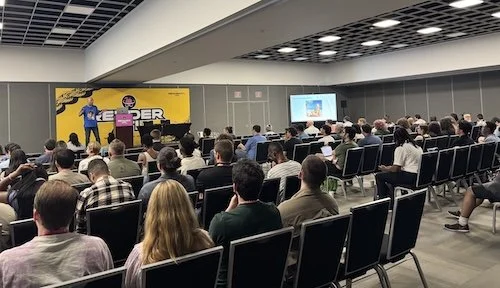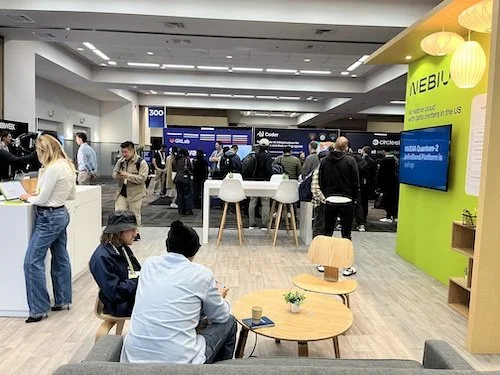From economic uncertainty to debates over AI regulation to brat summer, 2024 was a whirlwind. And as we step into 2025, many are bracing for another year of disruption and transformation.
Each year, we review our events database to find insights and trends from the past 12 months. Today we are sharing a few key takeaways that reflect on the past year and hint at what we can expect from speaking and events in 2025.
How has event seasonality changed?
Although the world of events is busy all year round, there are times when more events take place, calls for papers (CFPs) are open, and speaker invitations happen. Here is a snapshot of 2024 event seasonality trends by month, highlighting high-volume periods for events, CFPs, and secured opportunities for our speakers.
Taking a closer look at this data, seasonality for events and speaking is clear. As we’ve seen year-over-year, the first major spike occurs between March and June, and the second spike occurs between September and October. Down periods occur in July, August, and December when summer vacations and various holidays are more top of mind.
One category that does not follow this trend? Speaking opportunities secured. cred sources thought leadership engagements for speakers consistently throughout the year.
So how does all this compare to 2023? Despite a different social and economic climate in 2024 than in the year prior, as well as it being an election year, event seasonality trends have remained constant year-over-year.
What other trends are top of mind?
Drawing from lessons learned and trends from the past year, here are a few key trends that will impact speaking and events this year:
Event budgets are increasing: More marketing dollars are flowing into events - and event organizers increased their budgets over the past 12 months. They are putting these funds towards technology and experiential elements to enhance attendee experiences, engagement, and personalization. For example, tools like event apps offer easy access to networking and schedule management, while also providing important data and event analytics.
Creating more inclusive conversations: Planners and attendees alike continue to ask for a wide range of speakers and voices on conference agendas. And events that haven’t made this a priority are being called out (I’ve seen several LinkedIn posts over the past months calling out the issues with manels!) On the other end, in-house teams should take a critical look at their speaker bench for 2025 and ensure all experts are given opportunities to grow their thought leadership.
In-person events remain prominent, but virtual/hybrid integration grows: Hybrid event popularity grew by ~20% in 2024 indicating a shift toward more flexible and inclusive formats - and events are evolving to keep up. More and more events are trying out live polls, Q&As, and virtual networking tools to engage both in-person and remote attendees. On-demand content consumption is also gaining momentum, with many folks preferring to engage with content and materials at their own pace.
Corporate social responsibility has become a key consideration for planners and vendors: Sustainability isn't just a trend; it's becoming an expectation. Event companies are finding creative ways to implement this into on-site experiences - e.g. offering vegan or plant-based meals, introducing interactive recycling stations, swapping generic swag for more sustainable gifts, and focusing on partnerships with eco-conscious vendors (pssst, sharing our top tips for event sustainability here). Note that demand for these initiatives is impacted by location of events, content, and industry - e.g. in the Bay Area where employees often advocate for sustainable and healthy lifestyles.
Interested in working with cred on your speaking or event program in 2025? Get in touch! Want to keep up with more speaking and event trends like this? Sign up for our newsletter.
Header image credit: Image by pikisuperstar on Freepik





